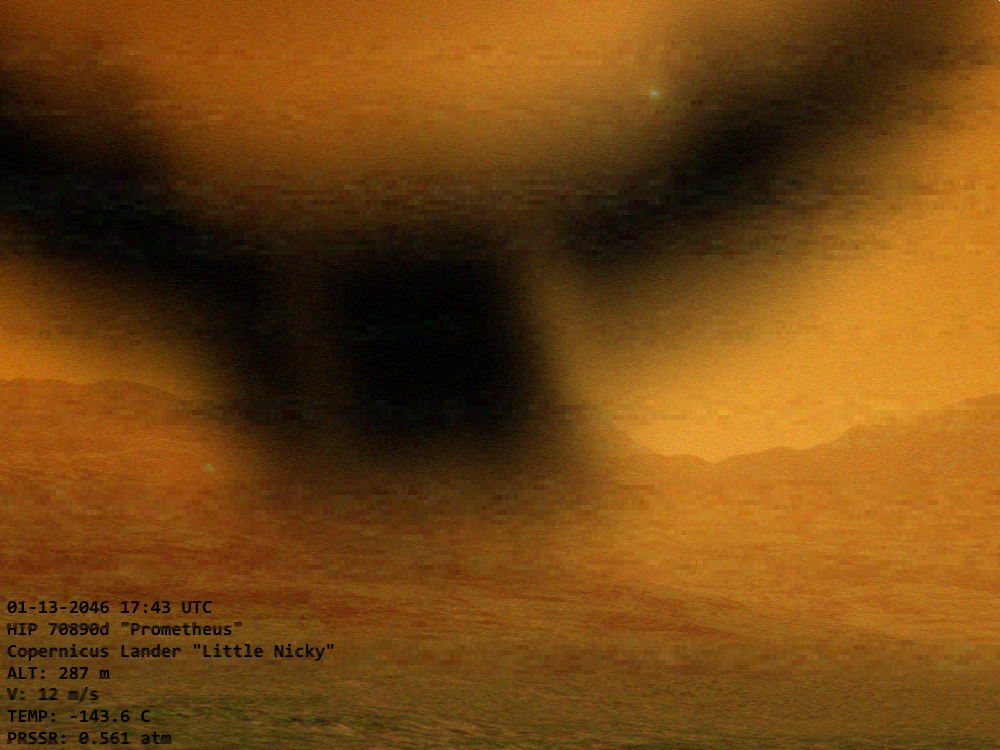
Copernicus Mission
Discovery, Exploration
After SHEO's mapping of the Proxima Centauri planetary system and the Breakthrough Proxima mission's initial survey, the probe Copernicus was launched in mid-2139 to explore it in more depth. Copernicus, with its new Xiuhcoatl fusion drive, reached a brisk 0.3c cruising velocity, arriving in the system just after New Year’s Day of 2054. The probe slowed to orbital velocity and parked around Prometheus, making detailed scans of the planet’s surface and taking high-resolution images to send back to Earth. A year later, after Copernicus’ onboard AI had determined a landing site, the surface probe was deployed. The results were stunning.
The lander, affectionately dubbed “Little Nicky,” touched down in a flat region later labeled Planum Hecateris. Its reentry video is one of the most famous pieces of visual media, as the scene revealed when Nicky passed below the cloud layer was no less than a great herd of alien creatures traversing the plain, followed by a swooping pass from a local flighted predator and a soft landing in a patch of the region's namesake “hand-grass”. The three-minute video clip effectively turned science fiction into science fact.
When the images from Copernicus and “Little Nicky” arrived on Earth, humanity was stunned. The discovery of microbial life on Europa in 2038 had established that life on other worlds could and did exist, but expectation of thriving complex life was still practically zero, especially so close to the Sol system. The images from the surface produced a profound paradigm shift in humanity.
After the departure of the Arete mission from the planet in 2186, Copernicus and "Little Nicky" served as a way to remotely monitor the technological and social development of the Prometheans until their invention of radio transmission. The Copernicus mission officially ended when the primary memory on the orbiter failed in 2247, rendering the probe dead.
The Astra Planeta universe and all related works © 2018-2024 Douglas Marshall ("SpyglassRealms"), all rights reserved. Thanks to Hanhula, Nimin, Annie, and the other fine folks in the WorldAnvil Discord for their invaluable help with the world formatting and CSS! Art assets without credits displayed are created by SpyglassRealms. Assets not created by SpyglassRealms are properly credited and are either public domain content, Creative Commons Attribution, or displayed with the permission of the creator(s).

